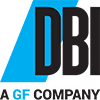SHoP does it.
BIG does it.
Even some small names do it.
The “Great Recession” has shifted the way architects think and practice.
The job board SimplyHired.com tracked the loss of architecture jobs when the recession hit, logging a sharp decrease of 11% from March 2007 to September 2008. Architecture firms had staffs totaling about 221,000 people that summer, which by the summer of 2010 had dropped to 167,000. (Michael Liu, “Lost Generation”, Metropolis Magazine, January 2011.)
After being dealt such a dramatic blow, architects and designers have been searching for new ways to practice: integration; facilitation of growth and innovation; broadening the reach of design and architecture. Some call it strategic planning and diversification- or, more simply, a return to the model of “Architect as Generalist”.
Recently Greg Pasquerelli of SHoP Architecture gave a lecture, “Out of Practice” at Cooper Union about developing a performance-based architecture practice. During the biggest economical bust they have transformed their “traditional” architectural practice into several new business ventures:
SHoP Architecture
SHoP Construction: Preconstruction review, model simulation, sustainability modeling, etc
SHoP Envelope
HeliOptix: Next generation sustainable technology integration
Inevitably all four ventures work together to produce a seamlessly integrated project- OR- can be serviced out individually on a per-project basis.
This isn’t a new concept within the industry, but instead is a rapidly evolving model for growth. It utilizes the specializations that exist with a firm, for example BIM and Ecotect and other software knowledge, while enhancing collaboration during each project phase and maximizing the project potential. Perhaps the greatest advantage is that it enables a firm to seek projects on multiple platforms, further develop existing relationships with new functions, and create sustainable architecture that is truly performance-driven.
Understanding the specialization that currently exists within the field of design and architecture and taking full advantage of the opportunity to service clients at all levels of the design and construction process facilitates growth and at the same time innovation. In this model smaller firms, those without international offices or hundreds of employees, are encouraged to go after larger international projects they may otherwise never get- because they can leverage their talent to offer comprehensive performance-based advantages with a hands-on approach.
So maybe the “Great Recession” can offer some hope to the design community after all…
Article by Kristina Iverson, LEED® AP. Read more about Kristina here.
